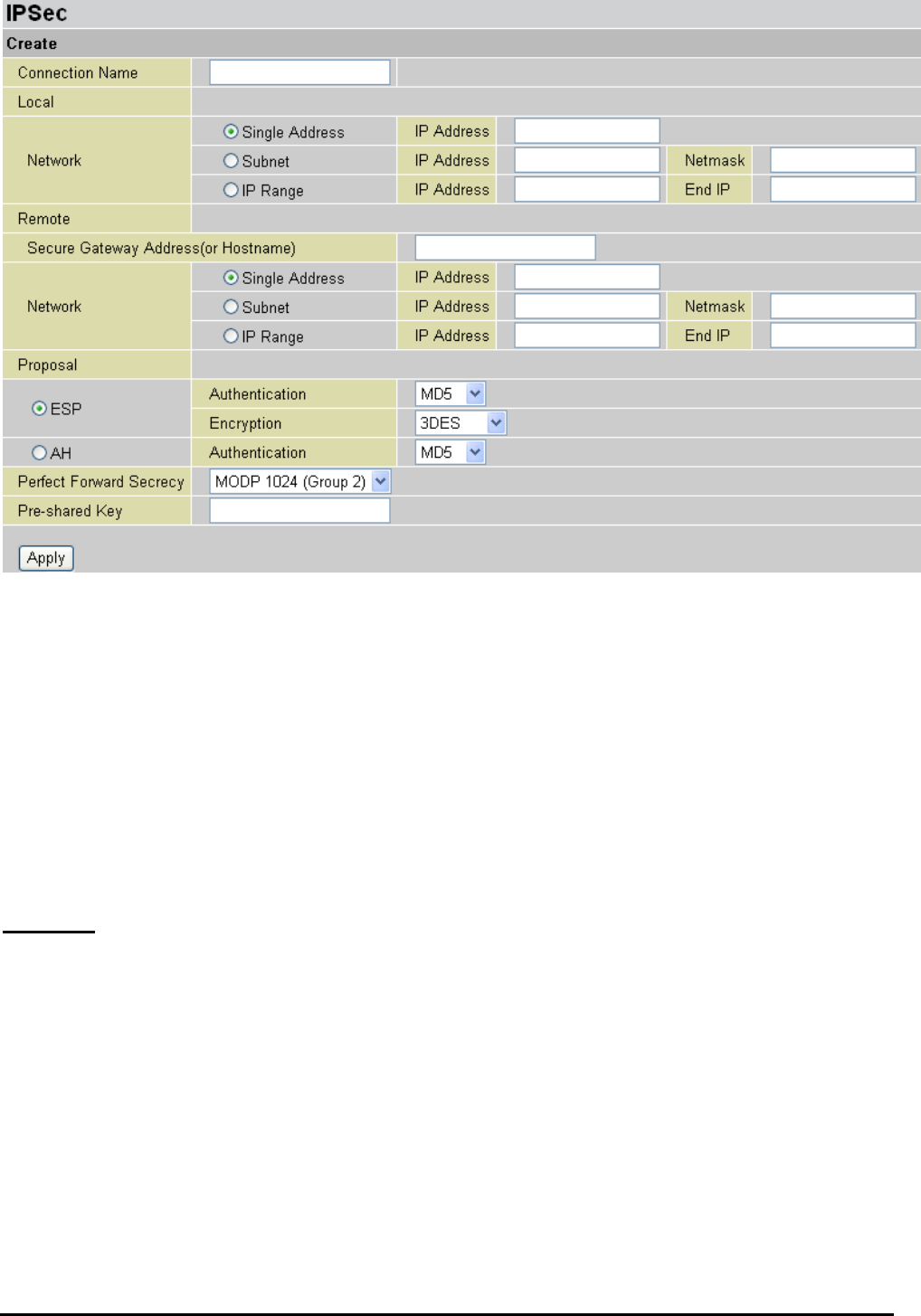
SHDSL VPN Firewall Bridge/Router
Chapter 4: Configuration
IPSec VPN Connection
Connection Name: User-defined name for the connection (e.g. “connection to office”).
Local Network: Set the IP address, subnet or address range of the local network.
Single Address: The IP address of the local host.
Subnet: The subnet of the local network. For example, IP: 192.168.1.0 with netmask
255.255.255.0 specifies one class C subnet starting from 192.168.1.1 (i.e. 192.168.1.1 through to
192.168.1.254).
IP Range: The IP address range of the local network. For example, IP: 192.168.1.1, end IP:
192.168.1.10.
Remote Secure Gateway Address (or Domain Name): The IP address or hostname of the remote VPN
device that is connected and establishes a VPN tunnel.
Remote Network: Set the IP address, subnet or address range of the remote network.
Proposal:
Select the IPSec security method. There are two methods of checking the authentication
information, AH (authentication header) and ESP (Encapsulating Security Payload). Use ESP for greater
security so that data will be encrypted and authenticated. Using AH data will be authenticated but not
encrypted.
Authentication: Authentication establishes the integrity of the datagram and ensures it is not tampered
with in transmit. There are three options, Message Digest 5 (MD5), Secure Hash Algorithm (SHA1) or
NONE. SHA1 is more resistant to brute-force attacks than MD5, however it is slower.
MD5: A one-way hashing algorithm that produces a 128−bit hash.
SHA1: A one-way hashing algorithm that produces a 160−bit hash.
Encryption: Select the encryption method from the pull-down menu. There are several options, DES,
3DES, AES (128, 192 and 256) and NULL. NULL means it is a tunnel only with no encryption. 3DES and
AES are more powerful but increase latency.
DES: Stands for Data Encryption Standard, it uses 56 bits as an encryption method.
82


















